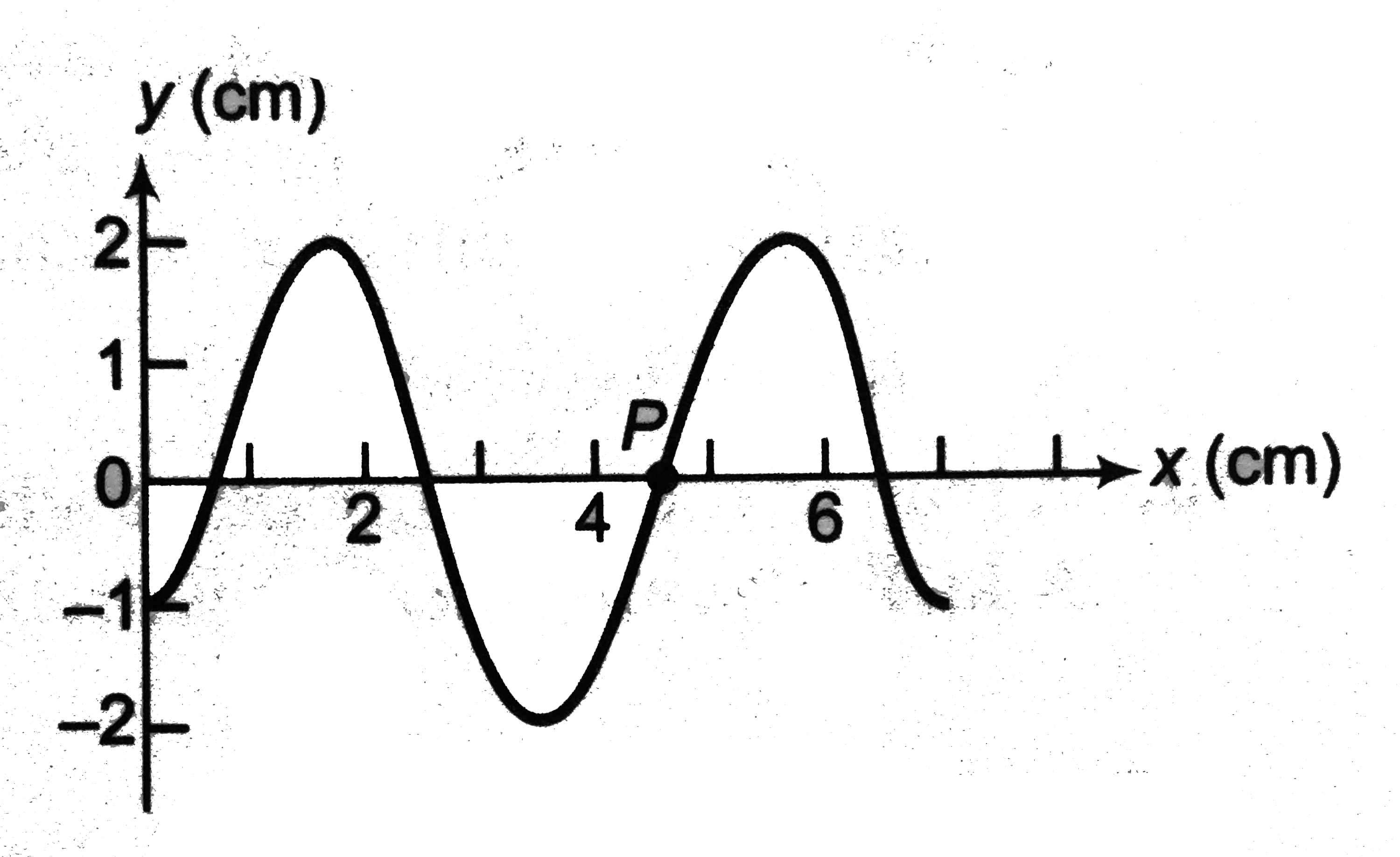The graph below shows that instantaneous displacements due to progressive iongitudinal wave travelling with a velocity along the direction ABCD. [Fig 14.4.8 (b)].
(a) What is the frequency of the wave ?
(b) What is the phase difference between the vibrations at C and D?
(c ) At which of the points A,B,C,D is the instantaneous particle velocity maximum forward?
(d) At which of the points, A,B,C,D is there a rarefraction? ![The graph below shows that instantaneous displacements due to progressive iongitudinal wave travelling with a velocity 50ms^(-1) along the direction ABCD. [Fig 14.4.8 (b)]. (a) What is the frequency of the wave ? (b) What is the phase difference between the vibrations at C and D? (c ) At which of the points A,B,C,D is the instantaneous particle velocity maximum forward? (d) At which of the points, A,B,C,D is there a rarefraction?](https://d10lpgp6xz60nq.cloudfront.net/physics_images/SCH_DKB_ISC_PHY_XI_C14_E01_009_Q01.png)
(a)
Frequency
(b) Distance between C and D
Phase difference
(c ) Particle velocity
Particle velocity is maximum when is maximum and negative. The point B has maximum ang negative value for . This point corresponds to a compression.
(d) The value of is positive at D. So at D excess pressure is positive. The point D corresponds to a rarefaction.
Topper's Solved these Questions
- WAVESBook:ICSEChapter:WAVESExercise:Sound Waves
Explore 50 Videos
- WAVESBook:ICSEChapter:WAVESExercise:Musical Sound
Explore 2 Videos
- WAVESBook:ICSEChapter:WAVESExercise:Solved Examples
Explore 17 Videos
- VECTORS SCALARS ELEMENTARY CALCULUS Book:ICSEChapter:VECTORS SCALARS ELEMENTARY CALCULUS Exercise:UNSOLVED PROBLEMS
Explore 79 Videos
Similar Questions
The graph below shows the instantaneous displacements due to a progressive longitudinal wave travelling with velocity 40ms−1. along the line ABCD. (See Fig. 14.4.13).

(a) What is the frequency of the particles of the medium ?
(b) What is the phase difference between vibrations at A and B ?
(c) At which of the points A, B, C, D is the instantaneous particle velocity maximum forward ?
(d) At which of the points A, B, C, D is there a compression ?
View SolutionWhat is the phase difference between the displacement wave and pressure wave in sound wave :-
View SolutionWhat is the phase difference between the displacement wave and pressure wave in sound wave :-
View SolutionThe diagram below shows (a) displacement-time, and (b) displacement-distance, graph of a wave travelling in a string with velocity 20 m s−1. In each case, use the graph to calculate the frequency and wavelength of the wave.

View SolutionConsider a sinusoidal travelling wave shown in figure. The wave velocity is +40cm/s.
Find
(a) the frequency
(b) the phase difference between points 2.5cm apart
(c) the velocity of a particle at P at the instant shown.
View SolutionWhat is the difference between average velocity and instantaneous velocity?
View Solution
The diagram below shows an instantaneous position of a string as a transverse progressive wave travels along it from left to right Which one of the following correctly shows the direction of the velocity of the points 1,2 and 3 on the string?
View SolutionA wave of frequency 500Hz has a wave velocity of 350m/s.
(a) Find the distance between two points which are 60∘ out of phase.
(b) Find the phase difference between two displacement at a certain point at time 10−3s apart.
View SolutionA wave of frequency 500Hz has a wave velocity of 350m/s.
(a) Find the distance between two points which are 60∘ out of phase.
(b) Find the phase difference between two displacement at a certain point at time 10−3s apart.
View SolutionA particle starts from a point A and travels along the solid curve shown in figure. Find approximately the position B of the particle such that the average velocity between the positions A and B has the same direction as the instantaneous velocity at B.

View Solution
